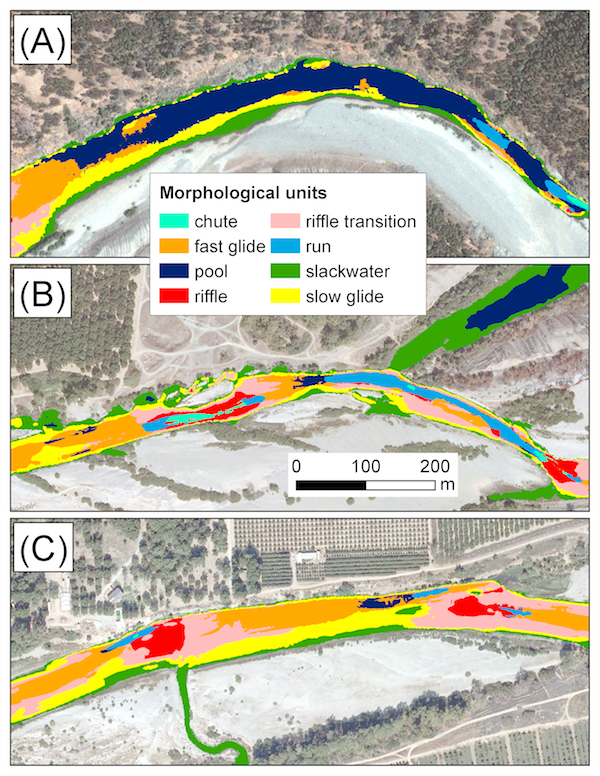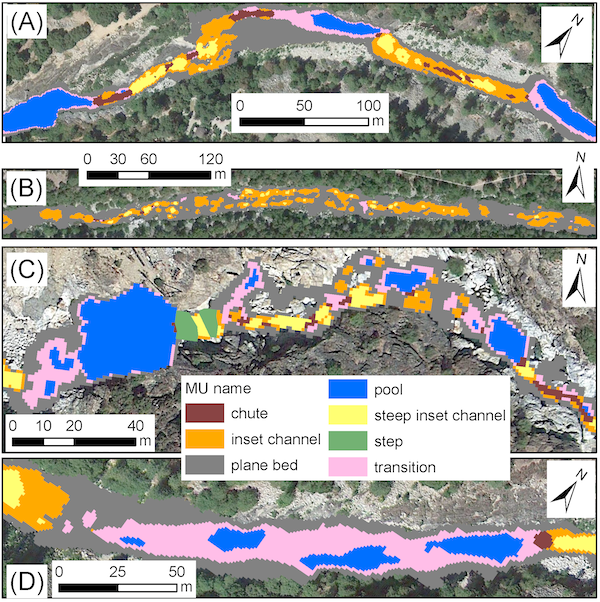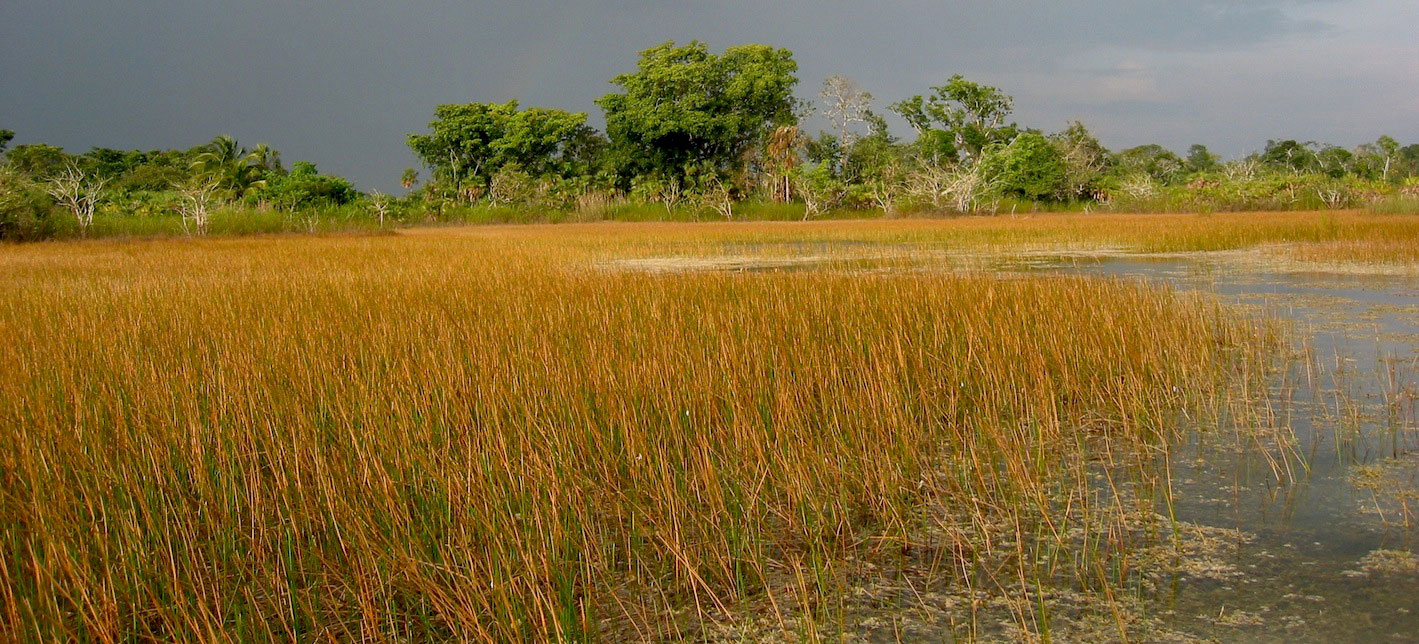2DMUs
Participants
Gregory B. Pasternack, Johua R. Wyrick, and Anne E. Senter
Background
Fluvial landforms at the morphologic unit scale (~1-10 channel widths) have typically been delineated and assessed in situ by manually classifying surface water patterns and areal extents. Errors in this method may arise from the subjective views of different users, varying surface water patterns when the same area is viewed at different discharges, and the difficulty in creating a complete map with no gaps or overlaps in delineated polygons.
Purpose
This research developed a new methodology for delineating and mapping channel landforms at the morphologic unit scale that eliminates in-field subjective decision-making, adds full transparency for map users, and enables future systemic alterations without having to re-map in the field. Results from river corridors have been worked up for two different landscape settings- mountain bedrock/boulder and valley gravel/cobble.
Methods
Delineation is accomplished through four basic steps. First, near-census topographic and bathymetric data are used in a two-dimensional hydrodynamic model to create meterscale depth and velocity rasters for a representative baseflow. Second, expert judgment and local knowledge determine the number and nomenclature of landforms as well as the range of baseflow depth and velocity over each landform. This step does require subjectivity, but it is transparent and adjustable any time in the future. Third, the hydraulic landform classification is used with the hydraulic rasters to quickly, completely, and objectively map landforms. Details and justification for procedural steps are discussed in our publications. Once MUs are delineated, then it is posible to run tests for MU organization conducted across four broad groups of metrics: abundance and diversity, longitudinal distribution and spacing, lateral variability, and non-directional adjacency.
Sample 2DMU maps for a lowland cobble/gravel bed river

Sample 2DMU maps from a mountain bedrock/boulder controlled river

Publications
- Pasternack, G. B. and Senter, A.E. 2011. 21st Century instream flow assessment framework for mountain streams. California Energy Commission, PIER. CEC-500-2013-059.
- Pasternack, G. B. 2011. 2D Modeling and Ecohydraulic Analysis. Createspace: Seattle, WA.
- Wyrick, J. R. and Pasternack, G. B. 2012. Landforms of the Lower Yuba River. Prepared for the Yuba Accord River Management Team. University of California at Davis, Davis, CA, 91pp.
- Wyrick, J.R., Pasternack, G.B. 2014. Revealing the natural complexity of fluvial morphology through 2D hydrodynamic delineation of river landforms. Geomorphology 210: 14-22. http://dx.doi.org/10.1016/j.geomorph.2013.12.013
- Wyrick, J.R., Pasternack, G.B. 2014. Geospatial organization of fluvial landforms in a gravel–cobble river: Beyond the riffle–pool couplet. Geomorphology 213: 48-65. http://dx.doi.org/10.1016/j.geomorph.2013.12.040


